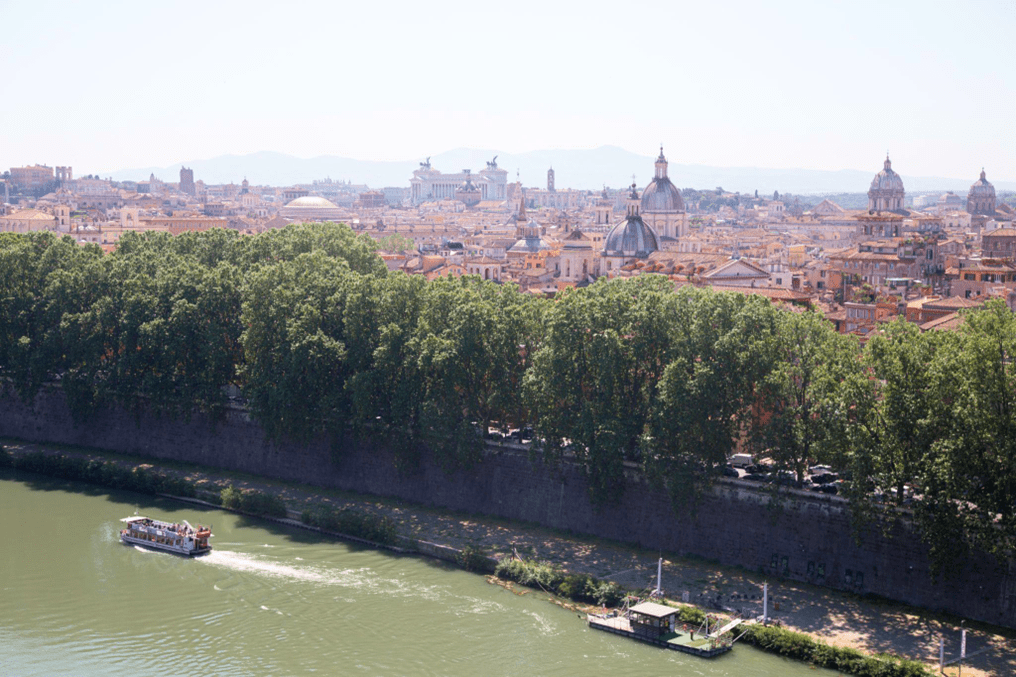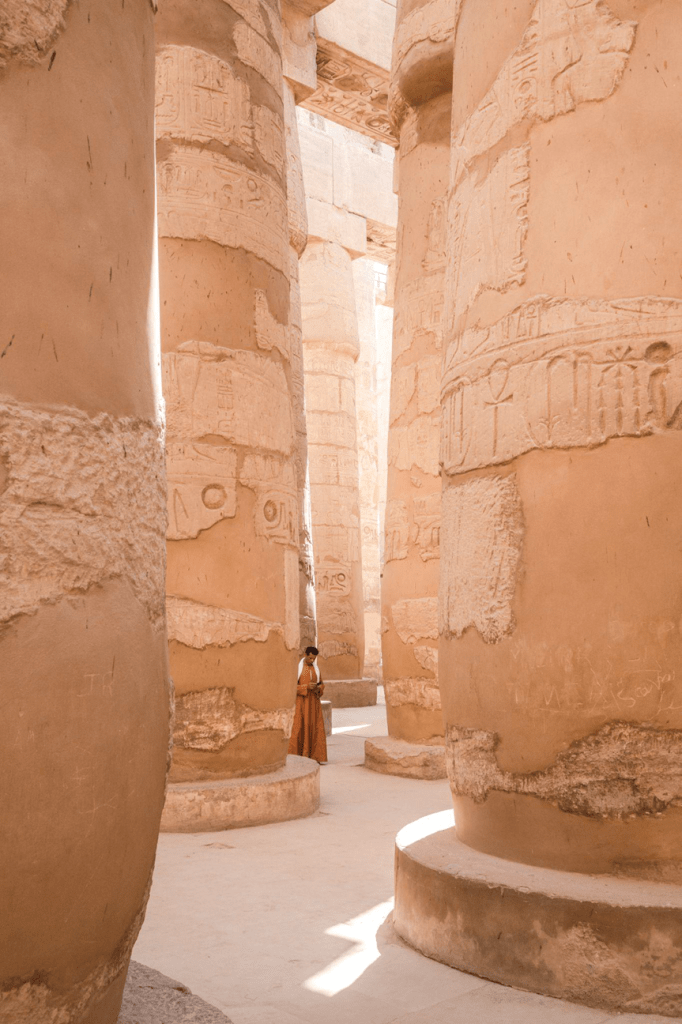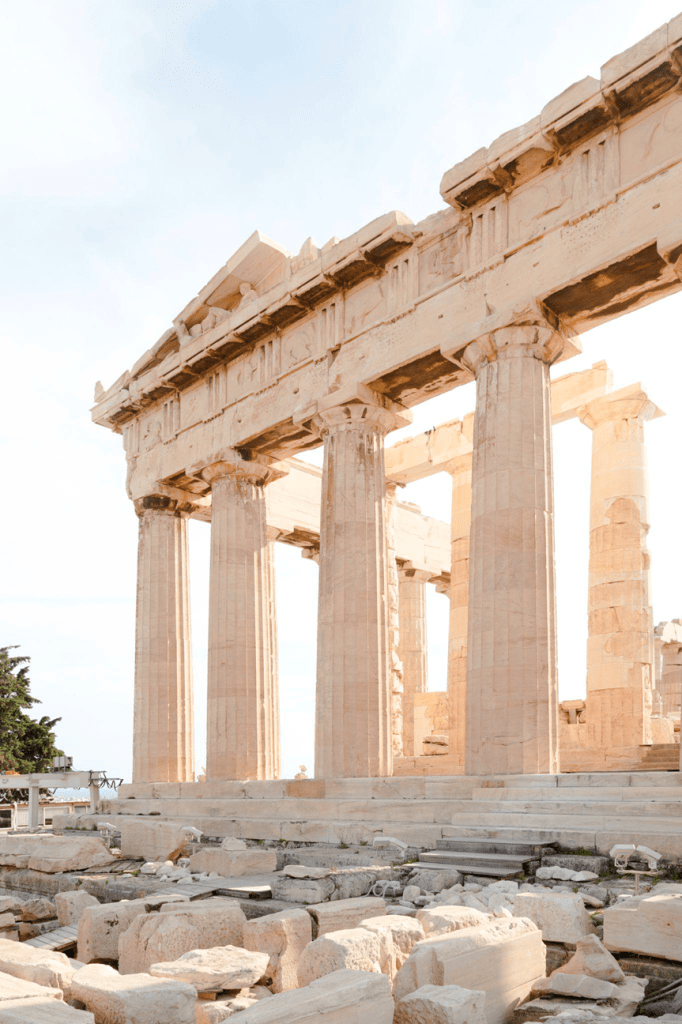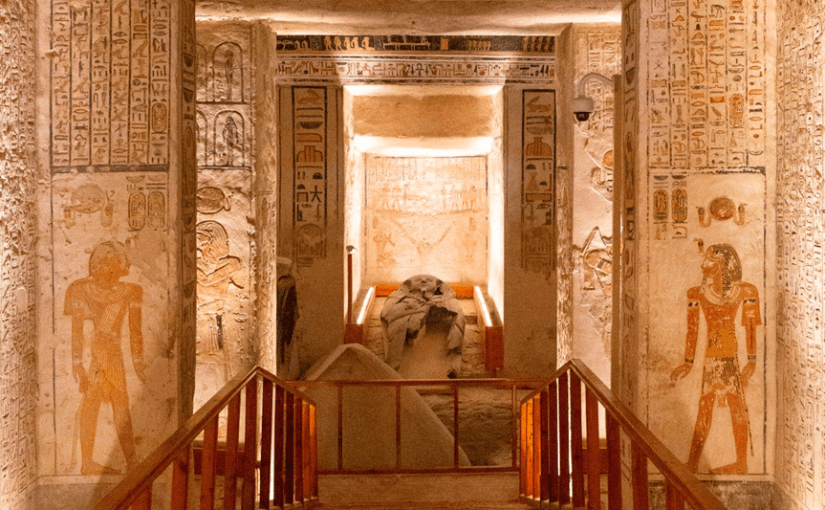Written and Photographed by: Sam Anderson

Over the course of a month post-graduation, I traveled to various ancient sites across the Mediterranean through the support of a traveling fellowship. With stops throughout Rome, Egypt, and Greece, I studied greater themes of procession in the ancient ruins. Each location featured a different approach to the movement through significant structures. Rome is based on a tangled web of streets guided by landmark buildings, Egyptian sites are structured around linear processions which connect the heart of the temple to the river, and Greek sites are guided by meandering paths which integrate with the surrounding nature to set the scene.
My adventure began with a quick stop in Rome, where I let the urban approach of the ancient city guide my experience. While lacking one specific path of travel, movement throughout the city is guided by views of landmarks, mainly churches. Distant views of the tops of domes poking above rooftops guide visitors through the city. As hints of these landmarks become visible through the alleys, a sense of energy builds until the full façade unveils itself in the midst of a piazza.



After Rome, I continued for a more extended time in Egypt. I made my way up the Nile River by train, beginning in the south, and stopping in Aswan, Luxor, and Cairo. Where Rome was built on a tangle of streets, ancient sites in Egypt are planned with a rigorous linear procession connecting each site directly to the Nile. With the various sites ranging from small tombs and temples to entire civic complexes, I was able to study these linear planning frameworks in practice. Starting in Aswan I visited Philae temple and Abu Simbel, each relocated due to the construction of dams. I also explored the ruins of the ancient trading city. I then took the train three hours north to Luxor, where I trekked between Karnak and Luxor temples, with Karnak being the largest temple complex in Egypt. Both temples established a strong linear connection to the Nile through a series of pylons and colonnades. I also traveled into the desert to the Valley of the Kings, where a number of pharaohs built their tombs. The tombs of Ramses VI and Seti I were especially remarkable with their original painted hieroglyphs. After another 13 hour trip on the train, a brief stop in Cairo gave me time to visit the pyramids in Giza. While in a far more ruined state, the grounds of the pyramids created strong linear avenues leading to the base of each pyramid. Partially fueled by the tourism industry, it was exciting to see a large number of community members reviving old crafts, and offering stories and tours of each site.








After nearly two weeks in the deserts of Egypt, my final stops were in Greece. As a contrast to the previous destinations, the Greek ruins focused on a procession through nature. To best explore this principle, I stopped by sites in a range of geographical conditions to study how each site employed its surroundings- an island, the mountains, and a city. Beginning with a ferry out to the island of Naxos, the island of the gods in mythology, I explored the unfinished temple of Apollo. Set on an islet beside the main island town, the temple overlooks the surrounding seascapes. I then ferried back to the mainland and headed into the mountains. In Meteora, while not ancient, these centuries old monasteries are influenced by the same principles as ancient Greek architecture. Located on the tops of uniquely pilar shaped mountains and cliffs, the monasteries highlight the surrounding views while their prominence above the landscape gives a connection to the heavens. In Delphi, the center of the earth in Greek mythology, I studied how the processional arrangement of the town highlighted views over the valley and of significant temples throughout. My final destination was the acropolis in Athens, where the pathway to the Parthenon at the top frames views of each significant building along the way. Once at the Parthenon expansive views open across the city to surrounding sea and mountains. In each site, the main temple sat in a most prominent position overlooking its surroundings- both exuding a feeling of might and encouraging a connection to the heavens.







I’m grateful for this opportunity to travel to these historically significant sites. While they appeared throughout my studies, seeing these sites first-hand brought a different perspective to each of them. In their ruined states, I was able to investigate the craftsmanship that went into each site. The other element that cannot be captured by photos is the strong cultural pride in these ancient sites. While unfathomably old, and in some cases unknowingly built, these projects continue to positively impact their surrounding communities millennia after their construction. After such an impactful experience, I can’t wait to start planning my next travel project!

